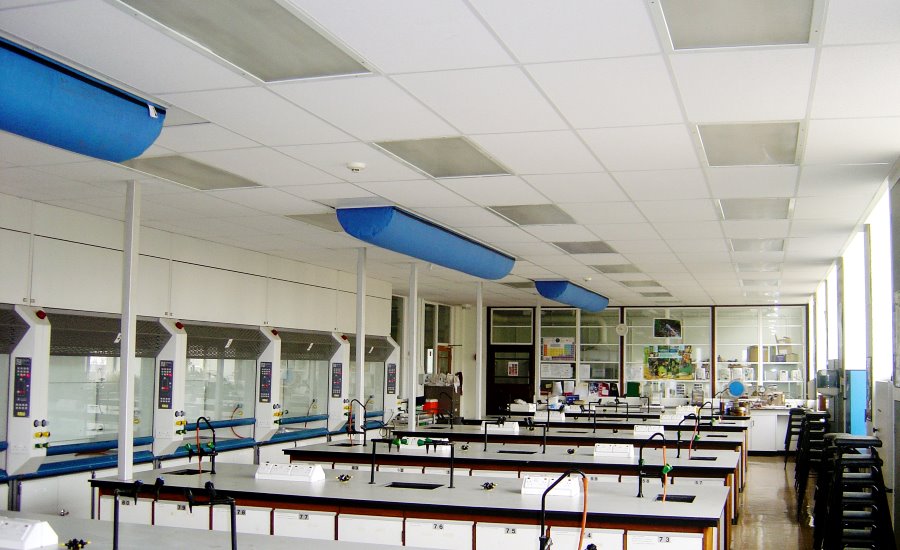The HVAC contractor that wants to provide the best-suited ventilation solutions for building owners should be adept in both sheet metal duct and fabric duct, or fabric air dispersion as it’s commonly called.
Both technologies have their rightful place in the HVAC industry, and it’s the HVAC contractor’s responsibility to choose the most appropriate medium for the building owner’s best solution.
Typically, ductwork concealed in ceilings and walls must be metal to comply with fire codes. However, fabric duct is ideal for open architectural ceilings, or in other words, when it’s visible. Any job using fabric will invariably combine it with metal in terms of take-offs, transitional ducts, collars and adaptors between the mechanical equipment and the fabric duct. Metal duct is also used in enclosed spaces to supply fabric duct in exposed areas.

One important difference is weight. Adding ventilation or air conditioning with fabric versus metal duct could save tens of thousands of dollars for an existing industrial building, simply because the former is 90-percent lighter. The original building’s roof structure could probably easily support fabric duct, but hundreds of tons of metal duct would require adding structural fortification. A good reference is that 60-inch-diameter fabric duct, even when outfitted with its heaviest suspension of a rail system combined with hemispherical ribs, weighs only two pounds/linear foot. Furthermore, since fabric duct installs up to 75-percent faster than metal duct, labor savings would also be significant.
Fabric duct’s flexibility is ideal for industrial manufacturing applications, because production lines are frequently moved and reconfigured. It’s expensive to move ceiling hung metal duct to accommodate a reconfiguration, however fabric can be inexpensively unassembled and reinstalled in just hours.
Unusually high ceilings are also prime fabric duct applications in terms of logistics and installer safety. Cold storage facilities, for example, are trending toward high rise designs to get the best building value in the smallest footprint. Recently, a pharmaceutical cold storage warehouse needed ductwork hung from a 90-foot-high ceiling that surpassed conventional construction lift equipment limitations. Fabric duct’s easy handling and reduced weight provided a safer environment for professional climbers that hung from the ceiling while installing the 20,000-linear feet of 68-inch-diameter duct. A more important advantage was the fabric duct’s micro perforation design. Air is dispersed through hundreds of micro vents versus conventional metal/register technology provided the best temperature uniformity. Consequently, fabric duct is now helping maintain the strict ±0.9°F (0.5°C) temperature gradient tolerance from ceiling to floor that’s required for pharma product quality.
Laboratories are especially conducive to fabric duct, because they require a uniform, gentle air dispersion without drafts, which are unhealthy for humans as well as laboratory animals. High velocity airflow inherent in metal duct/register designs also potentially disrupts draft hood air exhaust, which leads to stratified airborne contaminants.
Fabric-based air dispersion is also advantageous in indoor pools where volatile environments of high dew points, condensation and airborne chemicals corrode metal duct even when coated and insulated. Fabric duct doesn’t corrode and the selection of a permeable material prevents condensation, because air flows through the fabric.

Temporary tents used for parties, golf tournaments, air shows and other outdoor events increasingly use large ton package units that supply HVAC through fabric ducts hung from the ceiling.
There are dozens of examples when fabric duct may be a superior choice to metal duct in terms of material costs, fast-track project requirements, clean-ability, labor savings and other advantages. Contractors should weigh the advantages of fabric versus metal on every ventilation project to provide their clients with solution choices. Contractors can learn more about fabric duct project design and installation from major fabric duct manufacturers, which offer instructional videos, engineering assistance and customer support.






